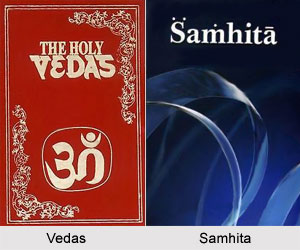 Sources of Hindu History can be traced from the researches conducted in the last fifty years. This has revealed the fact that in the prehistoric period four different countries Egypt, Chaldea, India, and China were the early bearers of civilization. In case of India the Aryans were the most advanced.
Sources of Hindu History can be traced from the researches conducted in the last fifty years. This has revealed the fact that in the prehistoric period four different countries Egypt, Chaldea, India, and China were the early bearers of civilization. In case of India the Aryans were the most advanced.
Sources of Reconstruction
A nation is recognized from its history and its actions but we Indians barely have any history to boast. The Political history till 600 BC has been recognized. Apart from these there are other materials also that may aid in reconstruction. These are broadly divided into four categories.
Literary Sources
Tradition is preserved in our secular and sacred writings. From the early time period till 327 BC we have literary tradition which has been proved accurate by inscriptions and other evidences.
(a)The Vedas and the Vedangas: From these much can be known about the political history of the earliest period. Also they inform us about civilization of a period extending over 1,800 years.
(b) The Samhitas: They are more than twenty in number. The chief of these Samhitas, the Manu-Samhita, guides people about laws, observances, manners, duties, religious customs of kings and the people.
(c) The Sanskrit Epics: These are great storehouse of history and of vast scientific facts. They bear the historical value of the earliest period of Indian history. Valmiki and Vyasa wrote down the epics in Old Sanskrit.
* The Ramayana: It has less historical substance than the Mahabharata. It has been doubled by additions and Valmiki`s first book has been mostly replaced by a new one.
* The Mahabharata: Mahabharata has been termed as the `Encyclopaedia of Hinduism`. It has also been revived and in the present day bears a new look. The original poem known as the Bharata-Samhita had 8,000 shlokas but later it has been lengthened to 24,000 shlokas. The Shanti-Parva (Peace-Book) relates mainly to the ancient and other periods of our history. The epics are the representation of the traditional pictures of social life in the Heroic Age.
(d) Historical works: Many historical works have also contributed as sources of literature like the Rajatarangini, the Kumarapala Charitra, the Khoman Raesa, Prithviraj Raso, Rajavali, the Jataka stories and several other Jain books like Satrunfaya Mahatmya of the fifth century AD.
(e) The Puranas. They have been grouped under 3 heads; they are Hindu Puranas, Jain Puranas and Buddhist Puranas. Of these mainly the principal Puranas contribute much to our ancient history. The historical chapters include the most authentic accounts of our historical traditions. Puranas have been divided by the puranists into eighteen principal branches, adding new material age after age.
Archaeological Sources
(a) Epigraphic: This is the most authentic source as it gives the accurate information of many periods. These can be obtained from Ashoka`s edicts, record on tablets of stone and copper plates. The oldest inscription is thought to be the dedication of the relics of Lord Buddha by his Sakya relatives in the Piprahwah stupa about 493 BC.
(b) Numismatic: It is another reliable source of our history. Study of the traditions point out the general currency of a gold coin called `nishka` in ancient India. Future investigations of Taxila, Oudh, Delhi and Mathura will also bring to notice many of these coins. From 327 BC various kinds of coins have been found which aid the scholars in their research.
Foreign Accounts
This depicts the accounts of foreign travelers and writers and also the references works in books, scriptures and monuments of other nations. Many authors of different era have contributed their research works. The Egyptians, The Assyrians, The Phoenicians, The Jews have significantly added to the various sources of literary works.



















